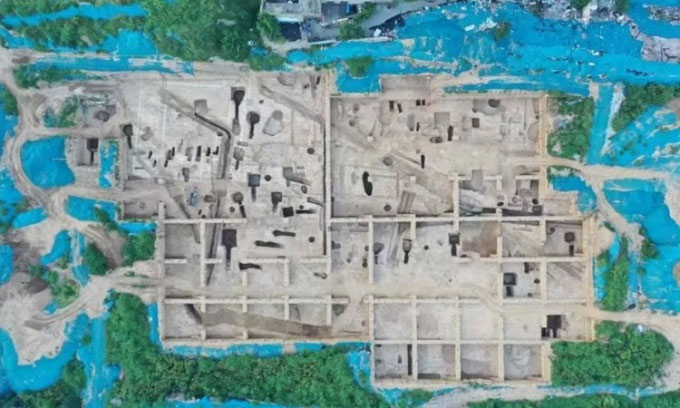3,000-Year-Old Tombs Belonging to a Wealthy Tribe, Containing Sacrificed Warriors and War Horses.
Archaeologists have uncovered a burial complex in an ancient capital of China. A total of 24 tombs were discovered at the site in Anyang City, Henan Province, located less than 2.4 km from the Yin ruins in the city center. The remnants at the site date back to the Shang Dynasty, which existed from 1600 to 1046 BC.

Tombs of the Ce tribe in Anyang. (Photo: Anyang Cultural Heritage and Archaeology Institute)
The newly discovered burial complex includes several pits containing chariots, horse remains, and the skeletons of warriors. Some of the warriors were adorned with decorative helmets made of shell strings at the time of their death. Meanwhile, the heads of several horses were fitted with gold shields and bronze linings.
According to Kong Deming, director of the Cultural Heritage and Archaeology Institute at the University of Pennsylvania, the practice of burying servants alive during the funerals of high-status individuals was very common during the Shang Dynasty.
Archaeologists from Anyang have been excavating the site for about two years. So far, they have uncovered the foundations of 18 ancient houses, along with 24 tombs and pits containing six chariots with the remains of soldiers and horses. The excavation team believes this site was the main living center of a tribe known as “Ce.” The Ce people may also have been buried there, as bronze vessels inscribed with the word “Ce” have been found in some of the tombs.
According to Kong, the symbol of the Ce tribe appears on many bronze artifacts at the site. In addition to bronze items, researchers have also discovered artifacts made of jade, stone, bone, and shell. Many of the decorative artifacts are ornate, indicating that the Ce tribe was quite wealthy. Although tomb robbers may have broken into one of the largest tombs, the remaining tombs still contain a variety of artifacts that are relatively well-preserved.
The archaeological team hopes to learn more about the social status of the tribe, their division of labor, and their relationship with the Shang royal family. They have found the foundations of several houses, including staircases and a decorative wall, revealing the construction methods of housing during this era.


















































